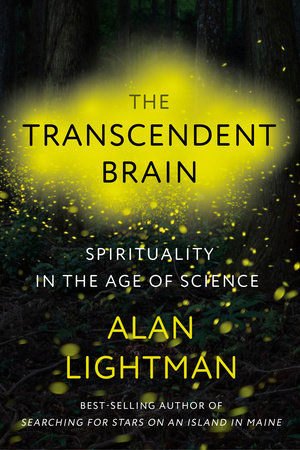
Art is Magic, Jeremy Deller (Cheerio)
Magic and Modernism, Rupert White (Antenna)
The Transcendent Brain, Alan Lightman (Pantheon)
Art, for Jeremy Deller, is not only magic but anything he wants it to be. His work is often curatorial and documentary, sometimes surprising and fresh, at other times just plain silly. For Deller, who has written and signed his own back cover blurb,
Art is a way of staying in
Love with the world.
It is also a form of Magic,
A cover version of reality, it
can trick us and is profoundly
absurd if not stupid.
Although sometimes Deller is interested in folklore and ritual, at other times his ‘magic’ is the kind of postmodern sleight of hand that works with The Sealed Knot groups to re-enact The Battle of Orgreave, miners versus police, partly in the village itself where the event occurred. At other times he facilitates discussions or art exhibitions about a social or political topic in community spaces such as a pub, or simply acts as a provocateur or interventionist – sometimes from an unexpected point of view – or juxtaposes the unexpected. There’s a wonderful shot of a miner’s son in full glam-rock wrestling outfit (almost drag) stepping into a mine lift cage with his father in hard-hat and dirty workwear.
Sometimes Deller documents what already exists: Depeche Mode fans, for instance, exploring their enthusiasm, devotion and dress sense; other times he transposes something into something else, such as a full size inflatable Stonehenge; or gathers up responses to his interventions and provocations. One of my favourite spreads in the book shows what the caption calls ‘A selection of possible copyright infringing T-shirts […] to commemorate the one-year anniversary of the Brexit disaster’, featuring provocative slogans such as
FRANKIE SAYS FUCK BREXIT
JOHN & PAUL & GEORGE & FUCK BREXIT.
MY BOYFRIEND WENT TO LONDON AND ALL I GOT WAS FUCK BREXIT
ABERCROMBIE & FUCK BREXIT
Ultimately, according to the brief interview at the back of the book, it seems that Deller is keen to ‘make people remember and feel angry’ and to make people think for themselves, trusting that ‘Art and ideas have afterlives’. This isn’t the sort of Art that we expect to and often see in white-walled silent galleries, this is art that involves people, a kind of art from and for the people (who of course may not want it). Deller sees it as a kind of folk art, but notes that he is ‘updating the idea of folk art to include performance and sound and other things contemporary art had adopted.’ However we or he positions his work Art is Magic is an intriguing and provocative retrospective.

Rupert White’s book Magic and Modernism is subtitled ‘Art from Cornwall in Context 1800-1950’ and is a fairly straightforward historical overview that ‘throws light on the links between art, folklore and tourism, as well as the Celtic revival and the occult’. It’s wide-ranging and informative, with extensive quotes, numerous illustrations and fantastic (and sometimes fantastical!) connections between writers, artists, places, movements, events and beliefs.
I have to admit I find the book rather unquestioning when it comes to the folklore, ritual and superstition in these accounts, and prone to exaggerating the isolation and difference of South West England. Did the general Cornish population really believe in fairies and piskies? Were May Day rituals fertility rites or just a chance to drink, dance and have a roll in the hay? Research, including by the pagan academic Ronald Hutton, suggests that assumptions and fictions have often been made about many rituals, events and images, especially with regard to their claimed historical roots. And the secret knowledge of many occult societies and individuals is often simply a need for ritual and community as much as the lure of some (usually conspiratorially-supressed) other or unknown.
However, the book is an intriguing addition to the literature of the neglected but important artists and writers who predated and facilitated the later and more famous art colony of St. Ives through their fascination with Cornwall’s landscapes and cultures, its primitive and naive folk artists, its rural space and way of life. If you are at all interested in Marlow Moss, Ithell Colquhoin, D.H. Lawrence, Stanhope Forbes, Aleister Crowley, Bernard Leach, indeed in cultural, literary and art history at all, this is a book you need to read. The webs of influence, friendship, correspondence and influence spread much wider than you can imagine…

Alan Lightman’s book is a scientific exploration of ‘Spirituality in the Age of Science, which rationally considers how creativity, mystery and the sublime can be accounted for in the human consciousness. It’s a welcome riposte to the evangelical reductionist approach many scientists adopt or feel is necessary, and whilst never supporting any form of deism or ‘other’ here, Lightman – through discussion with others and exploring newly published research and ideas – shows that there is room in contemporary theories and understanding of atomic structure, neural networks, human bodies and society for the unexplainable. As he states in his Introduction ‘We are experimenters, and we are also experiencers.’
Rupert Loydell
